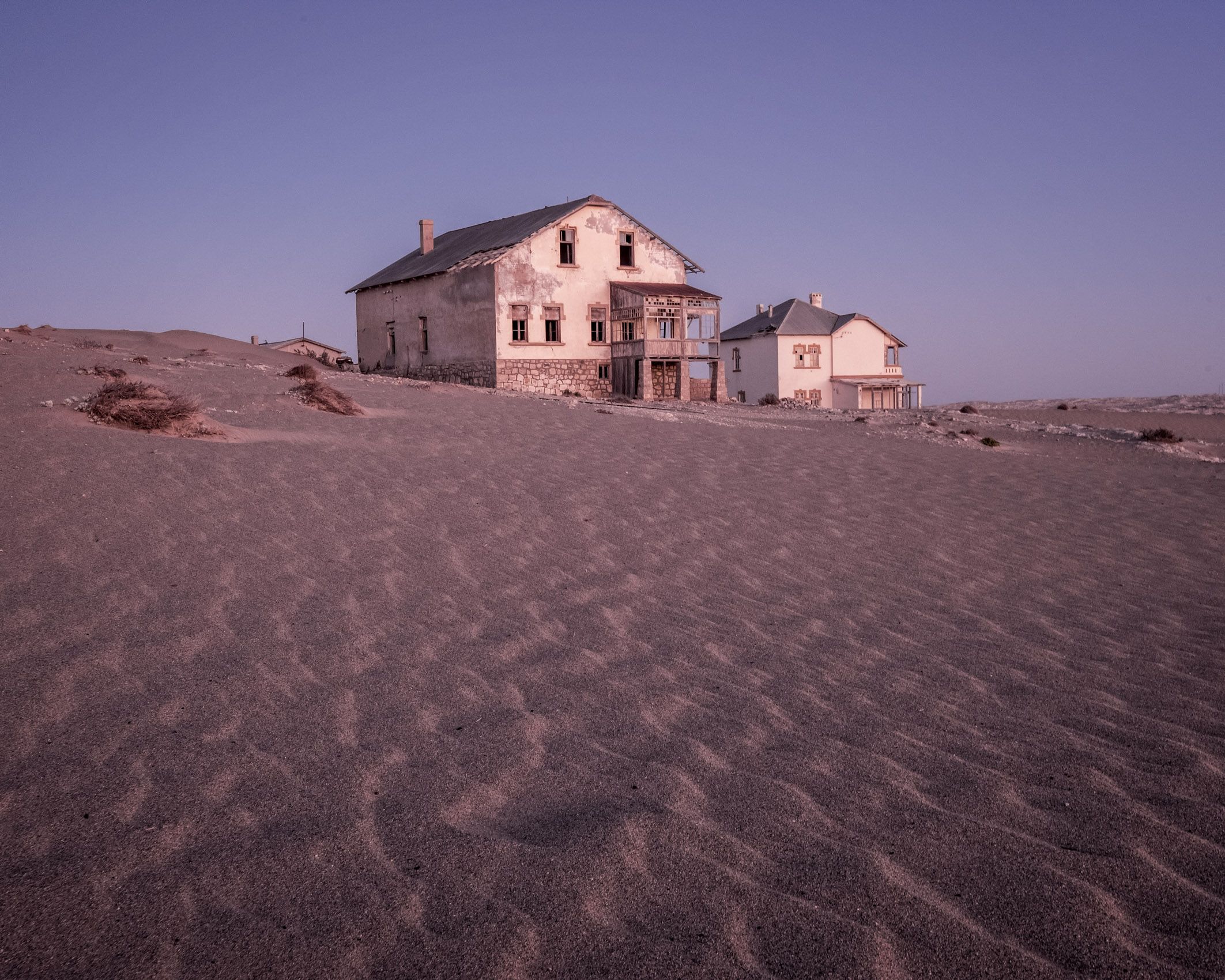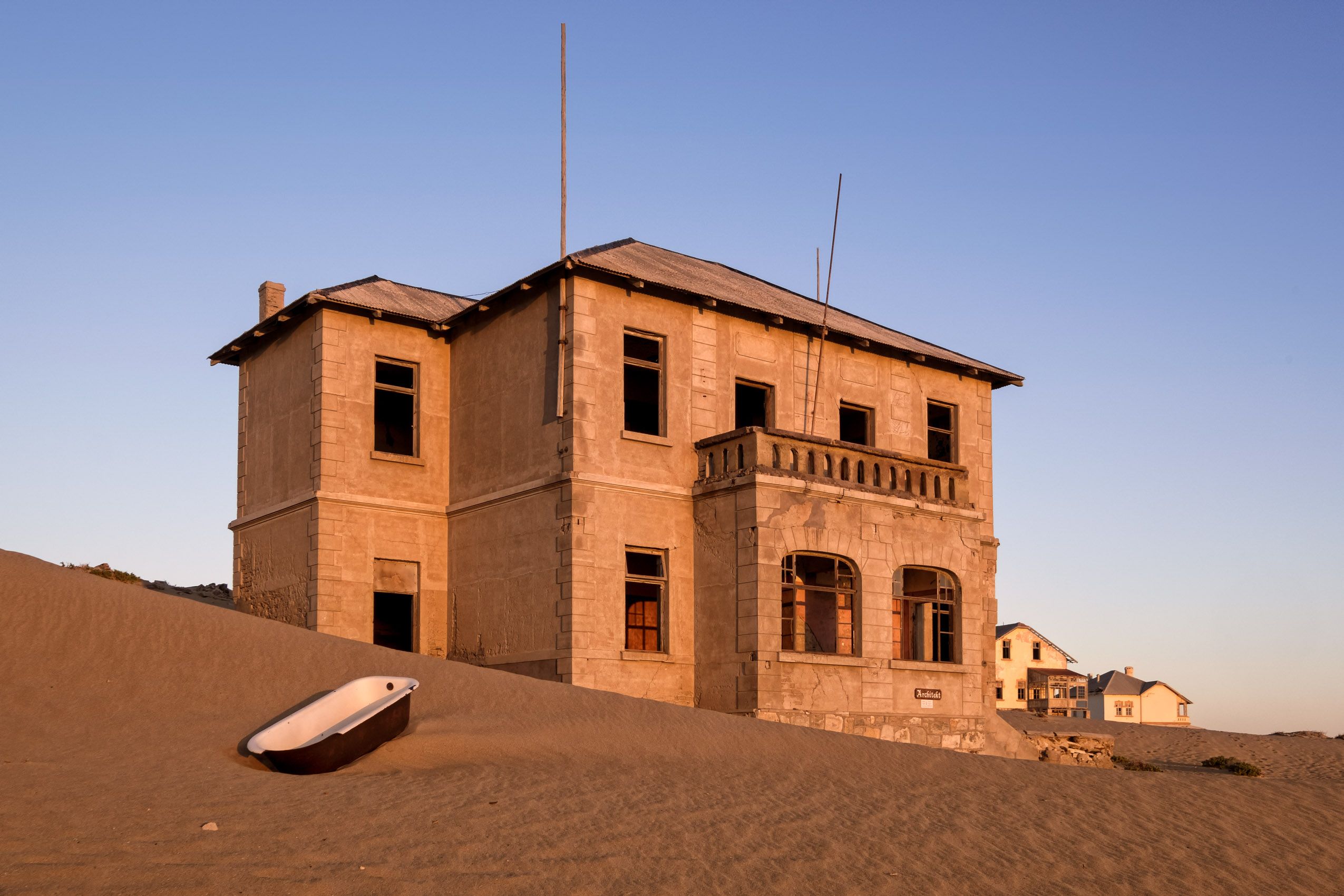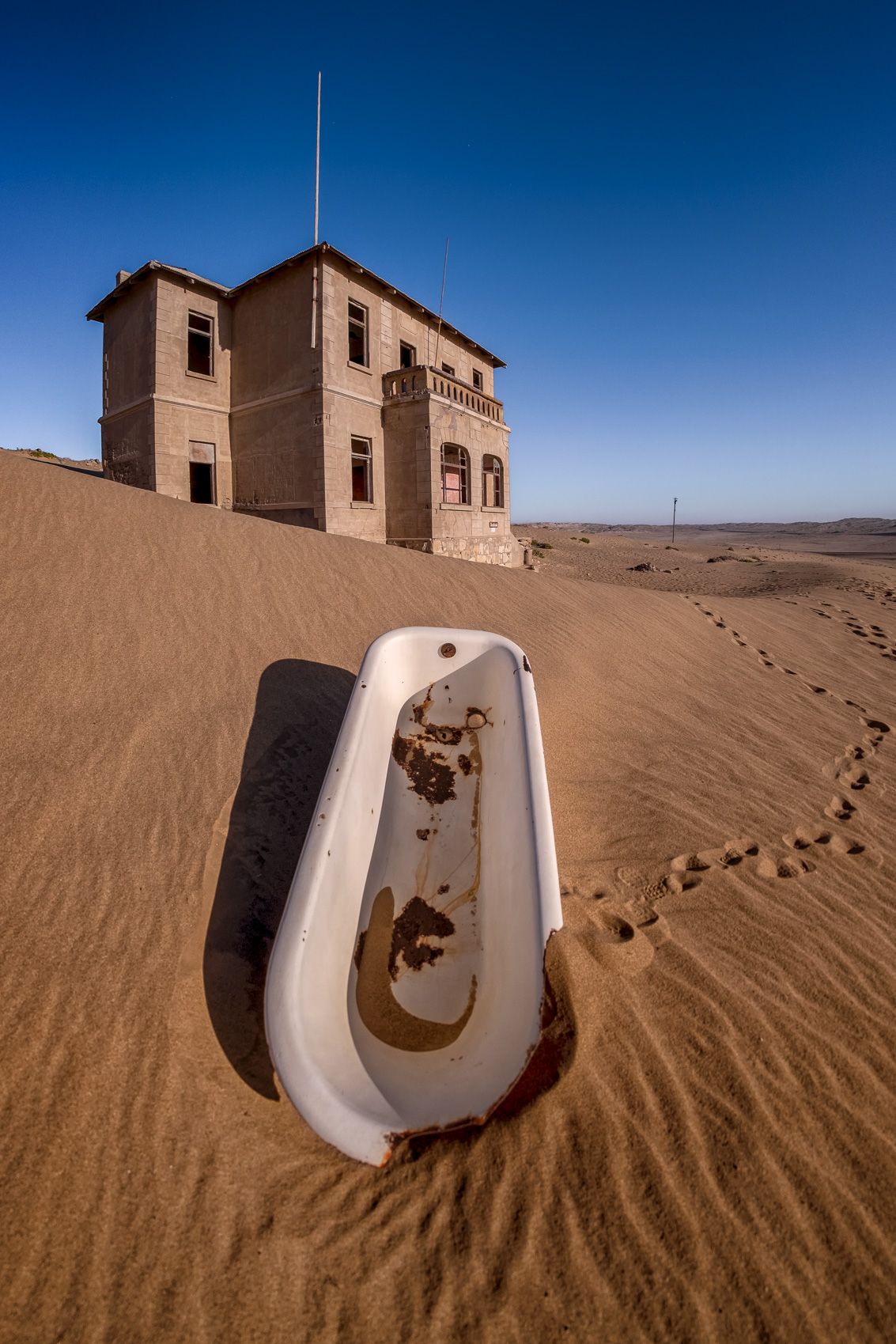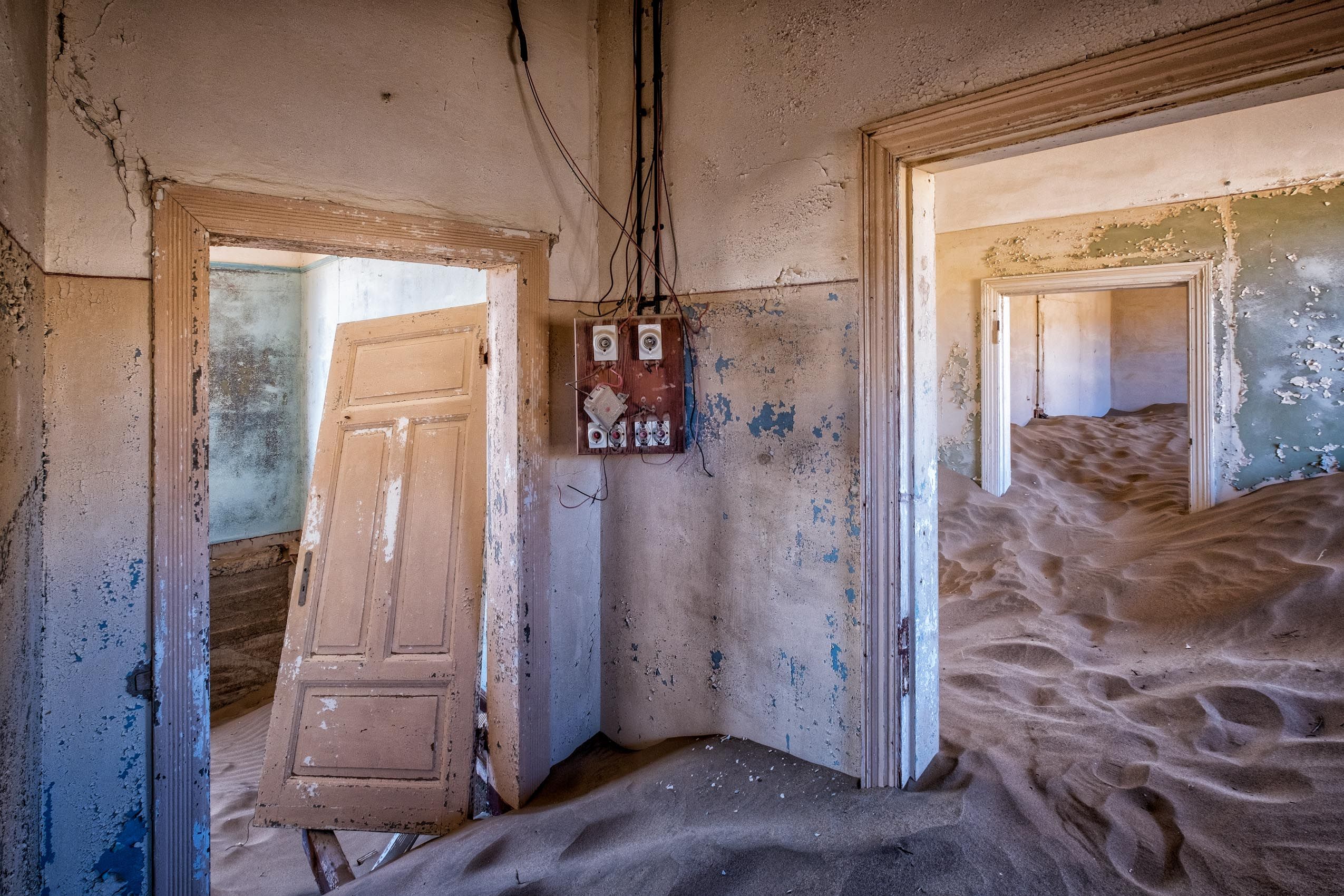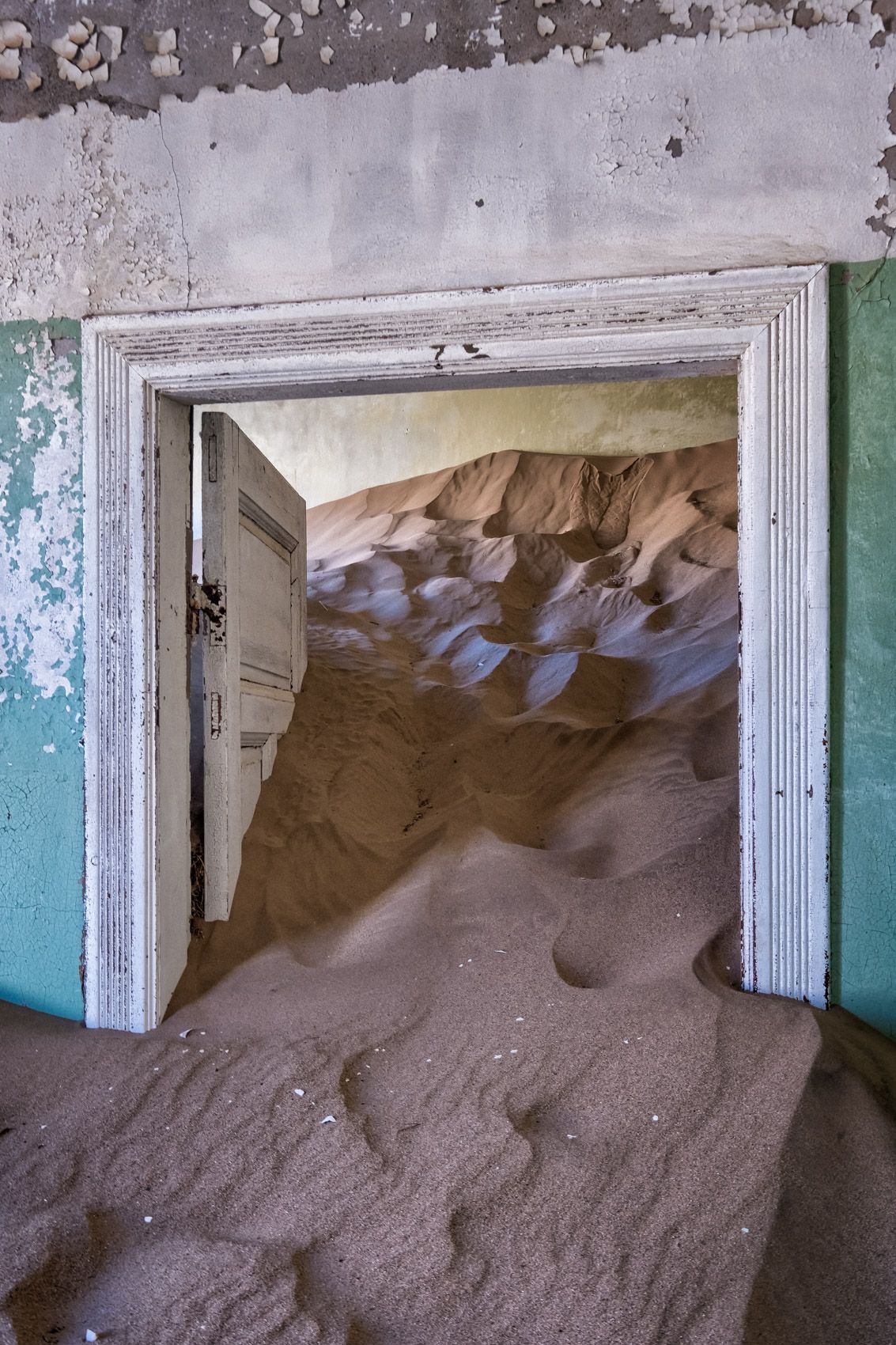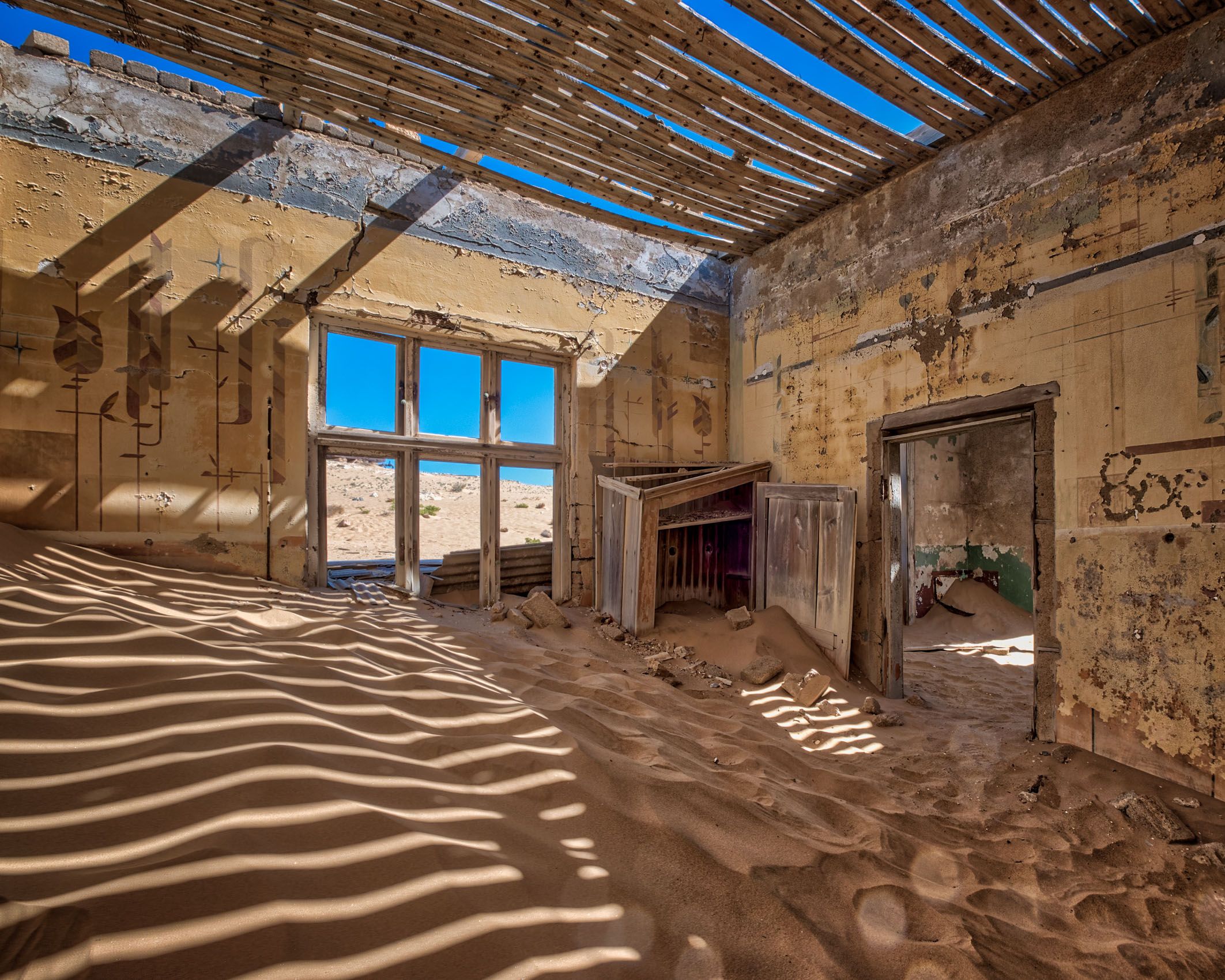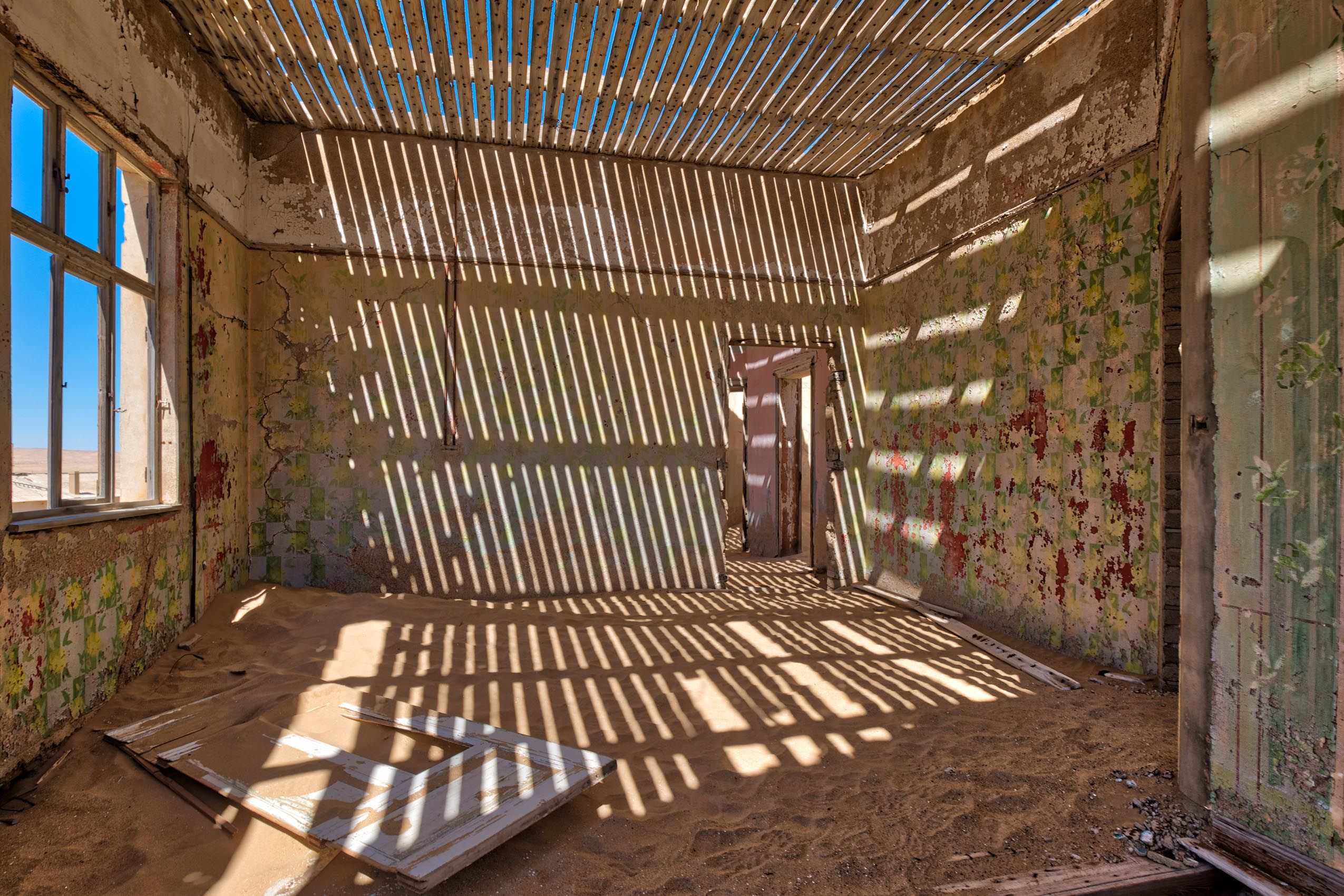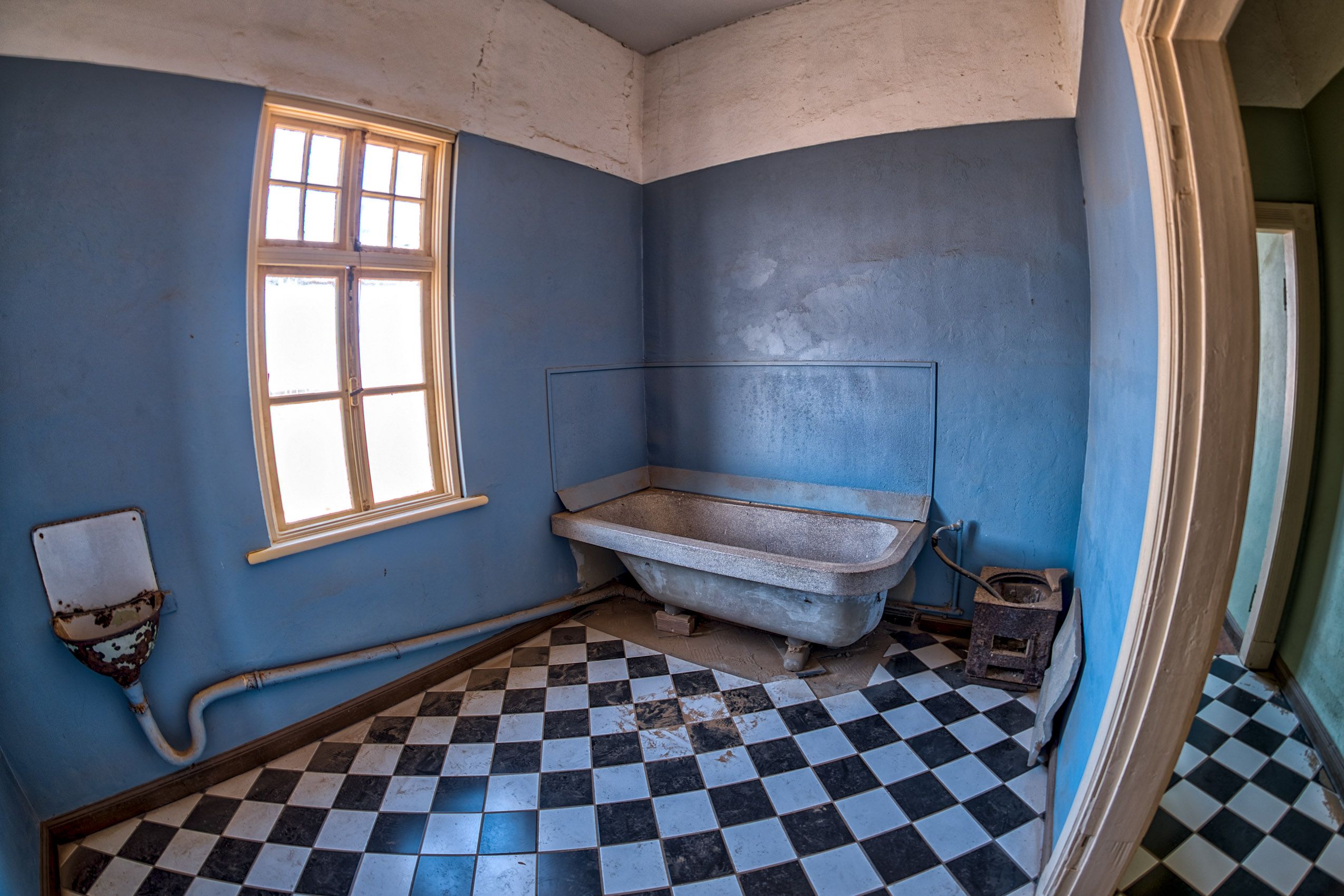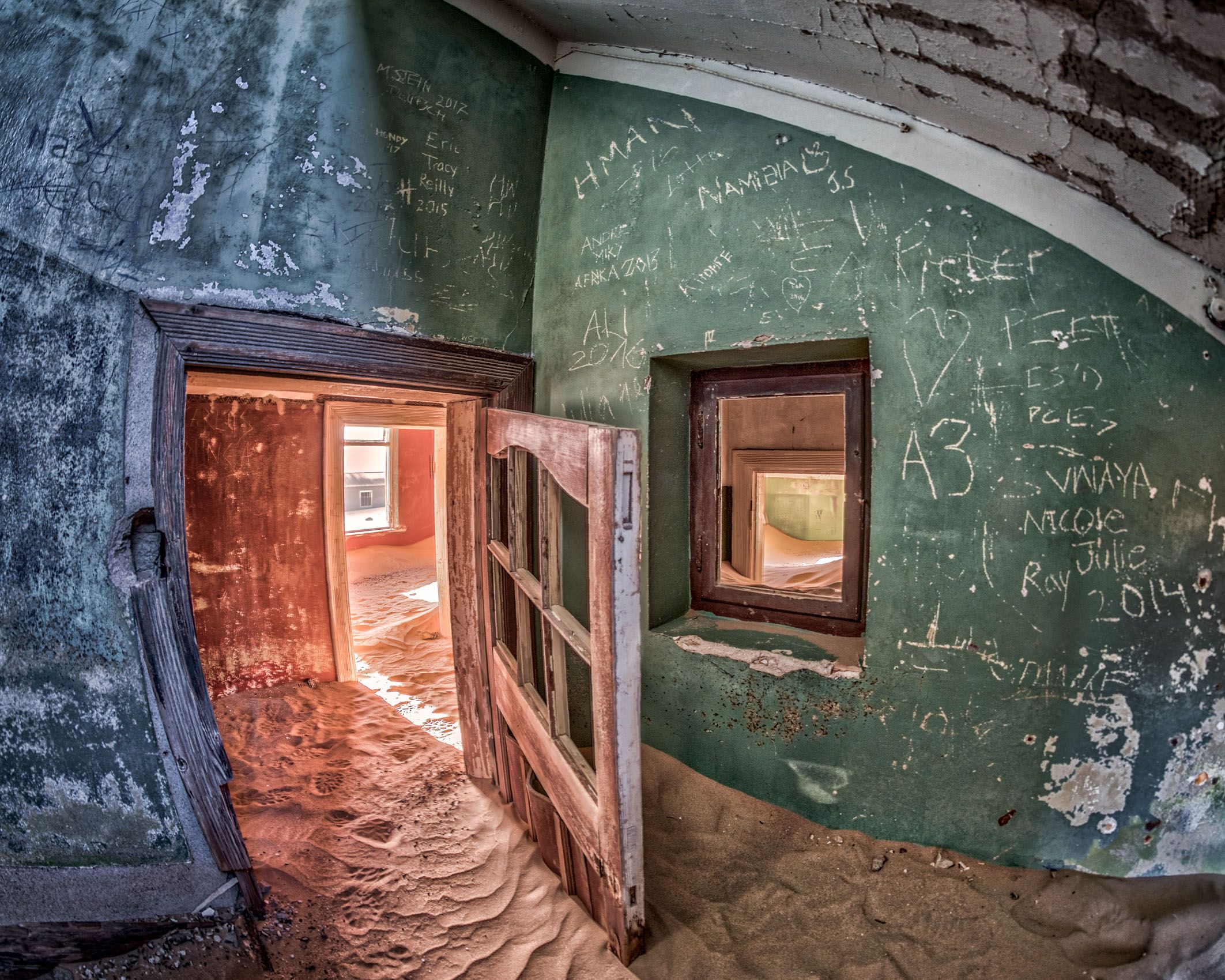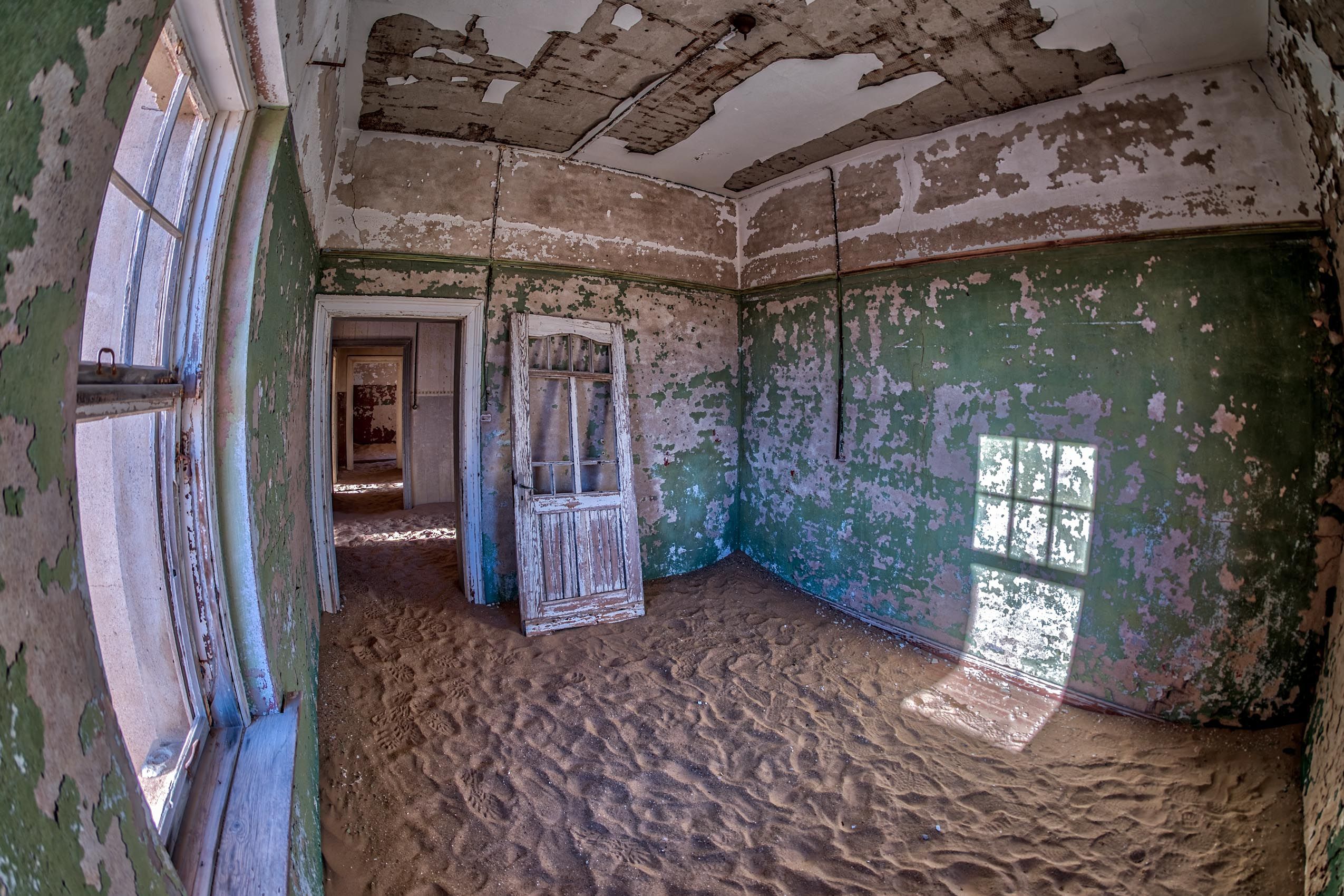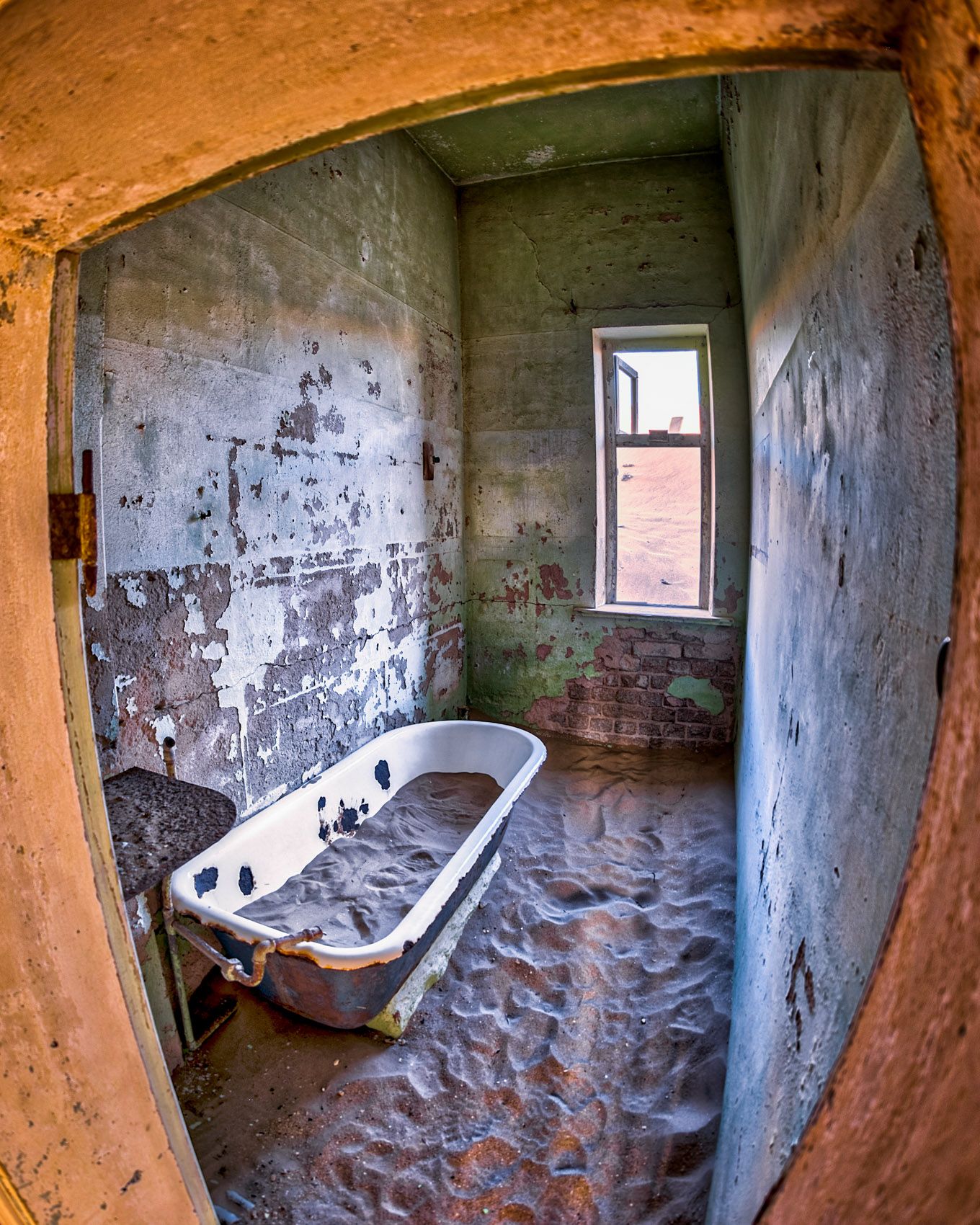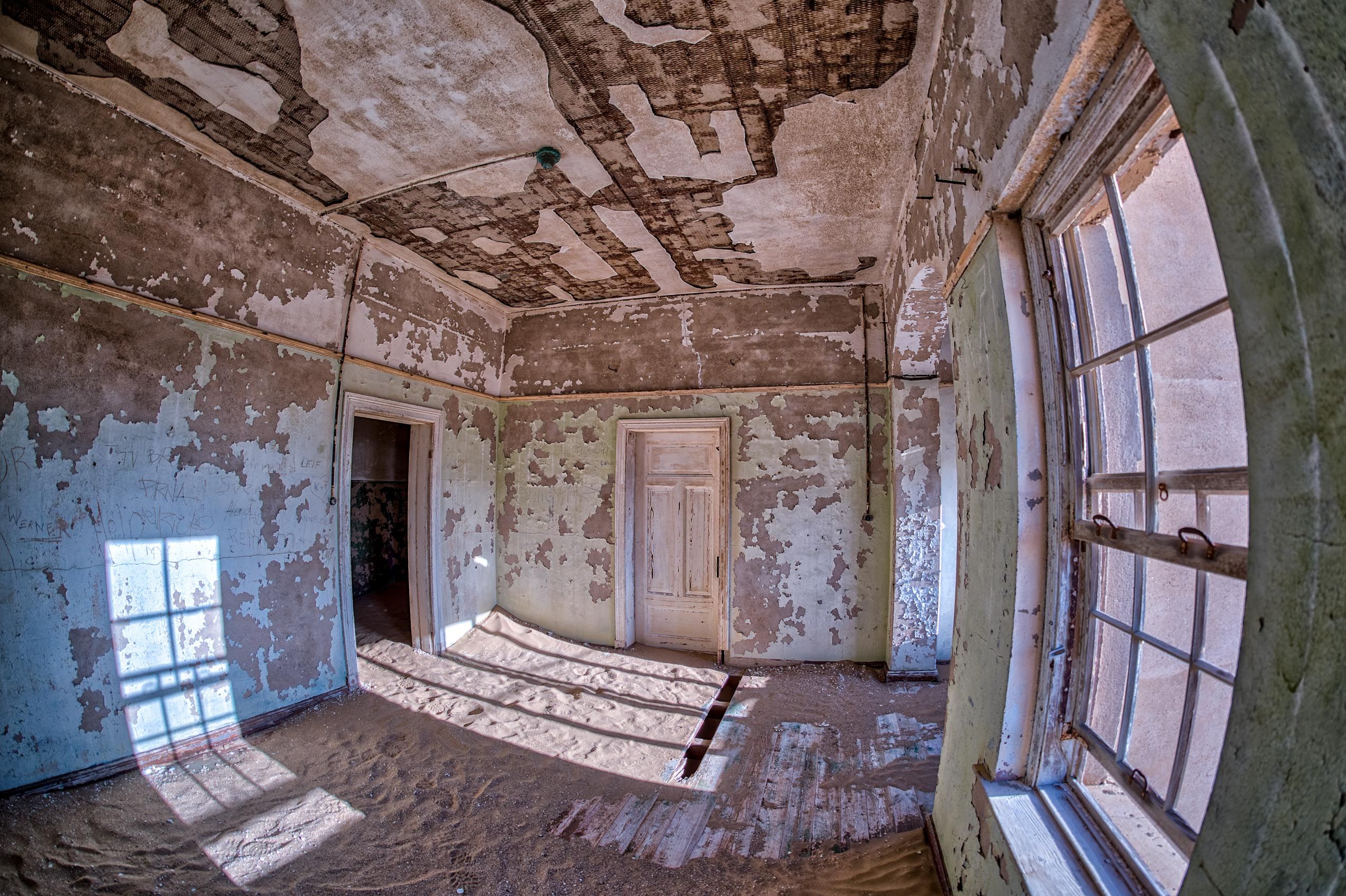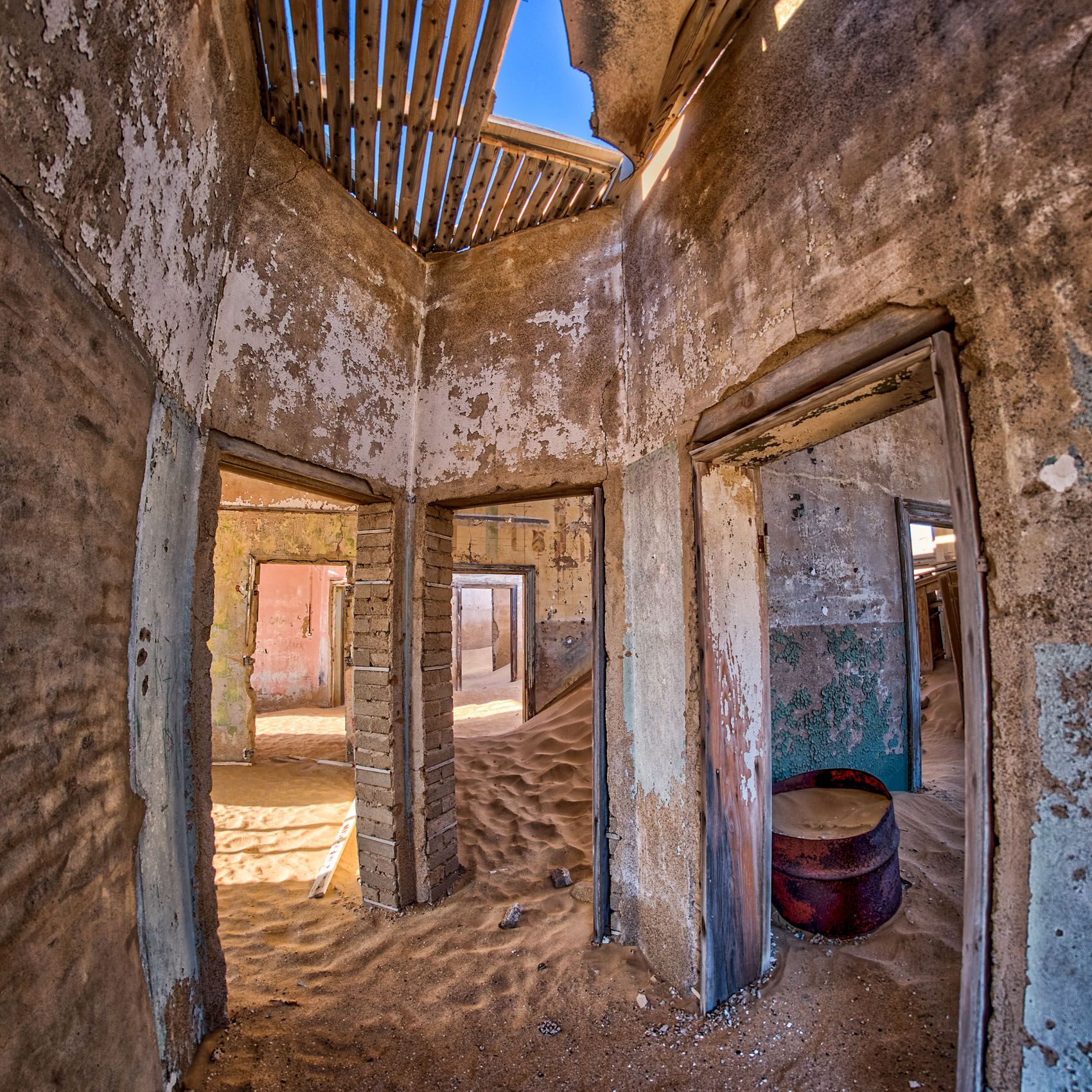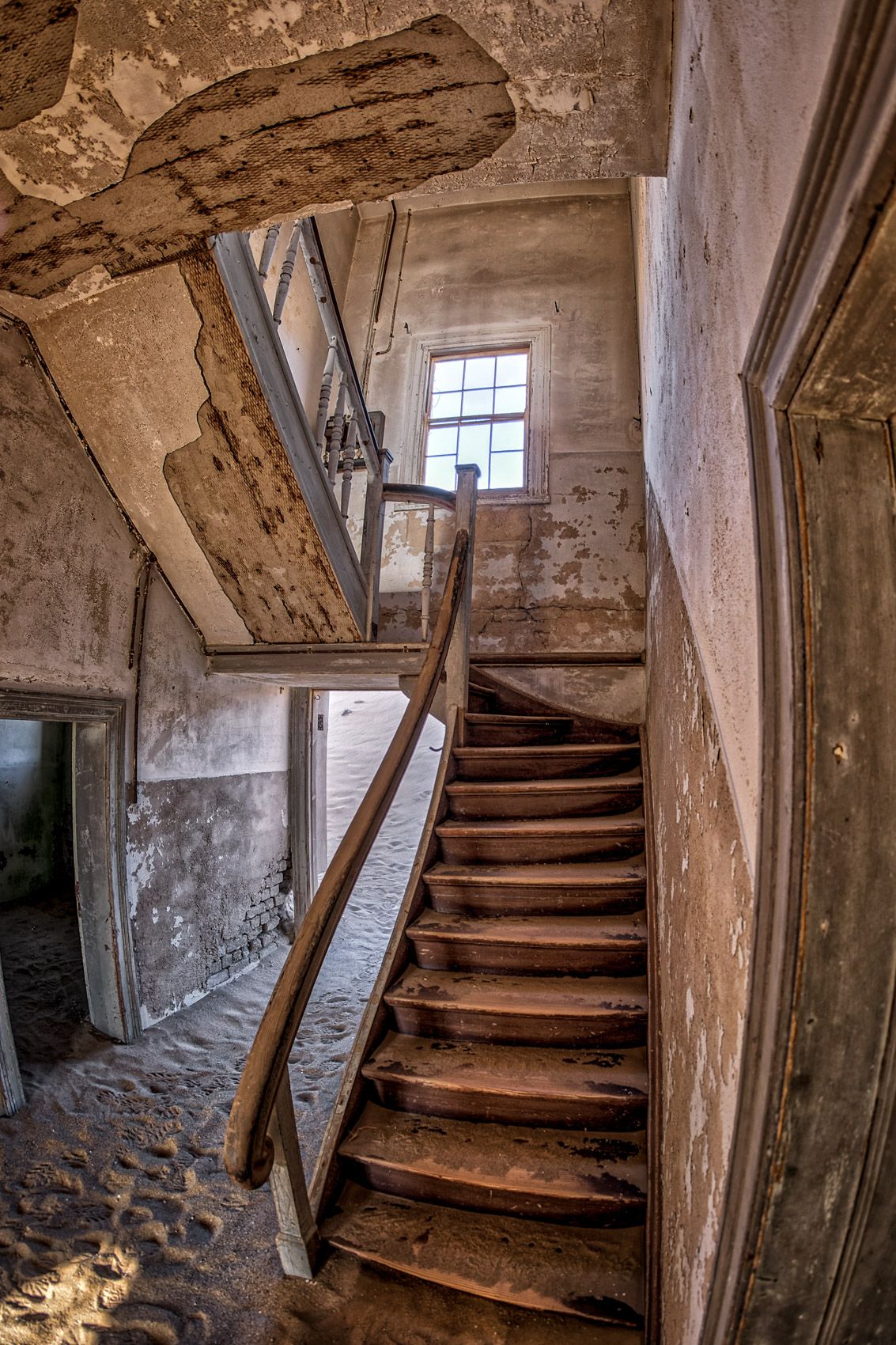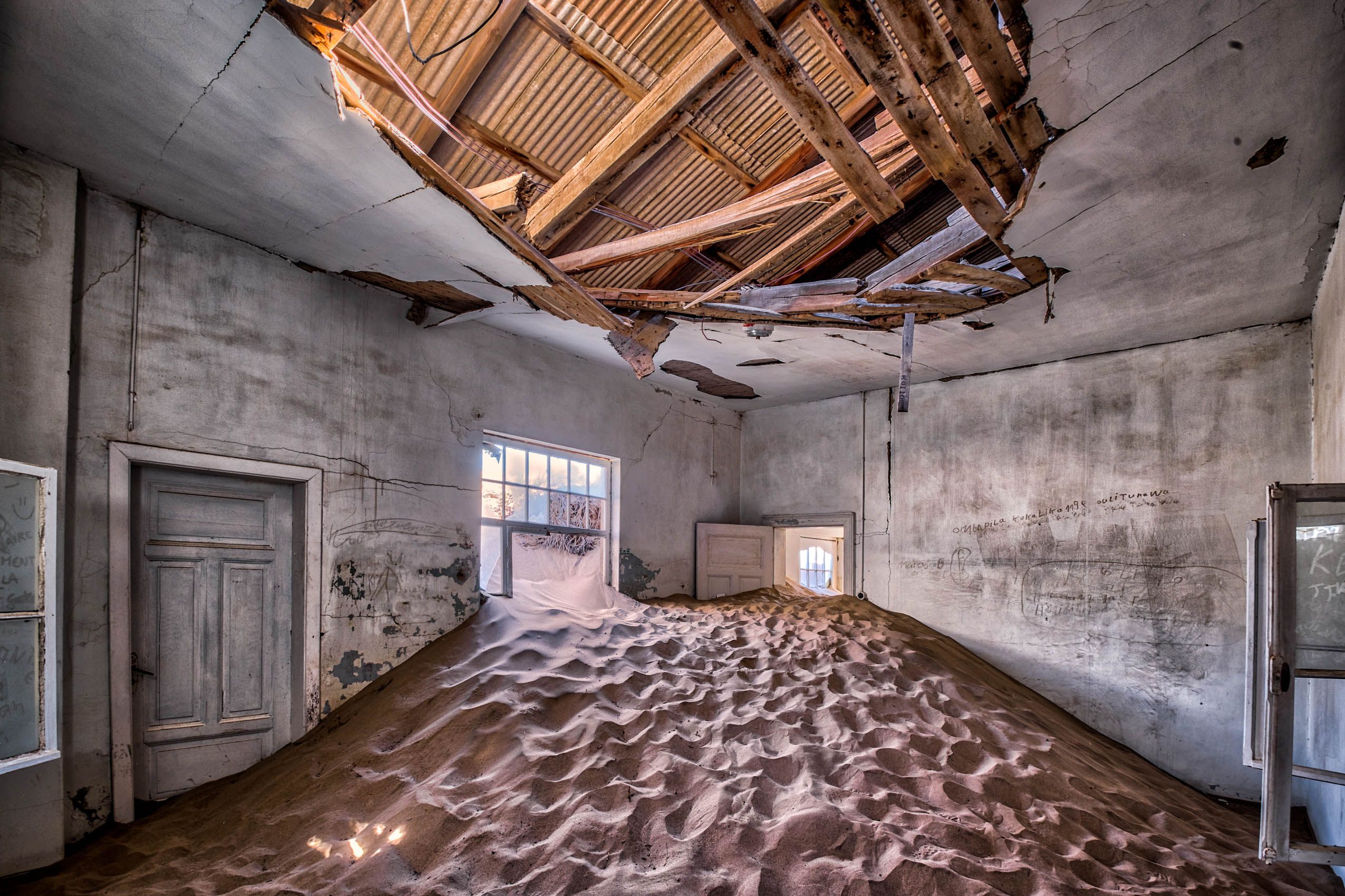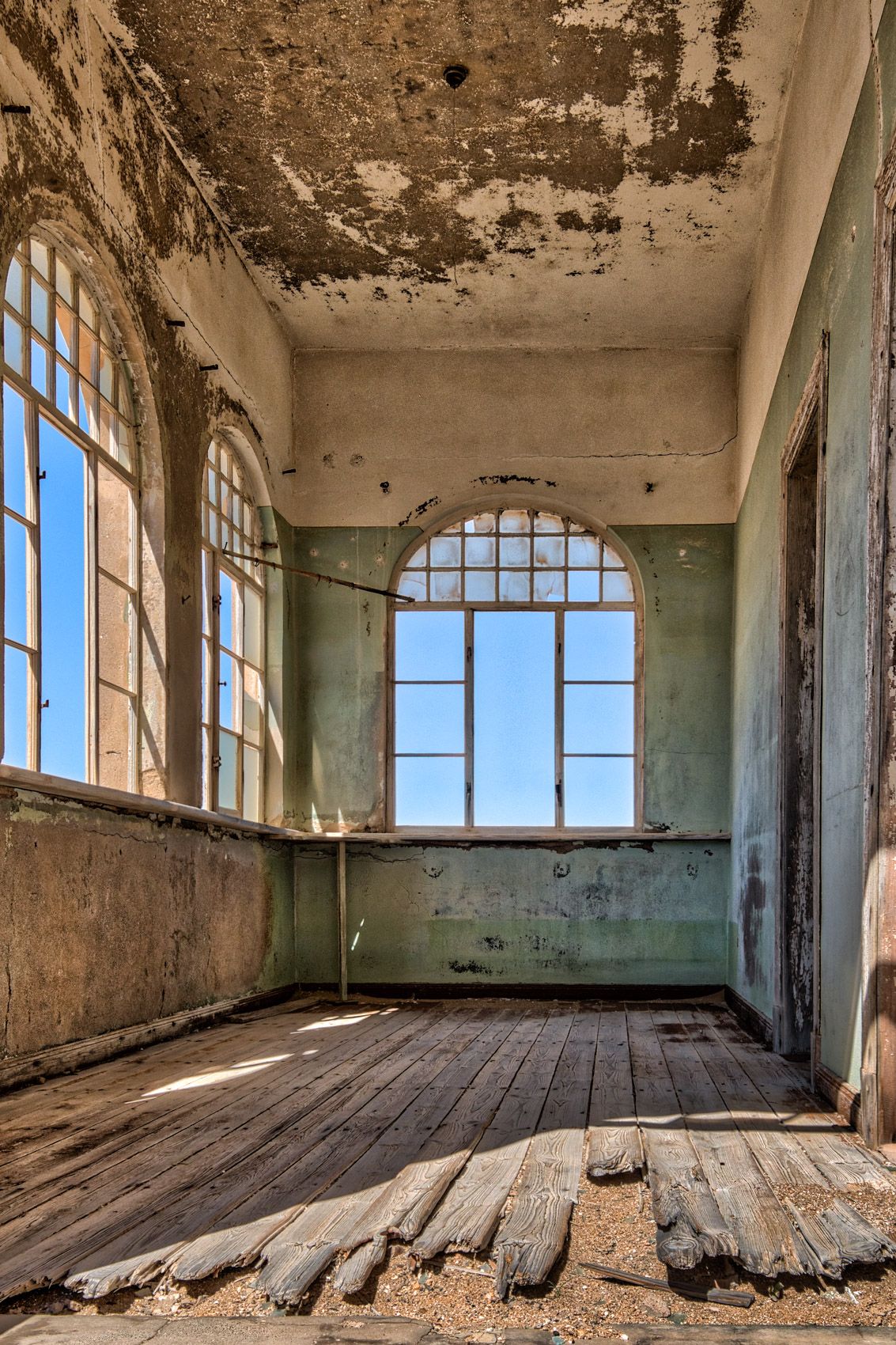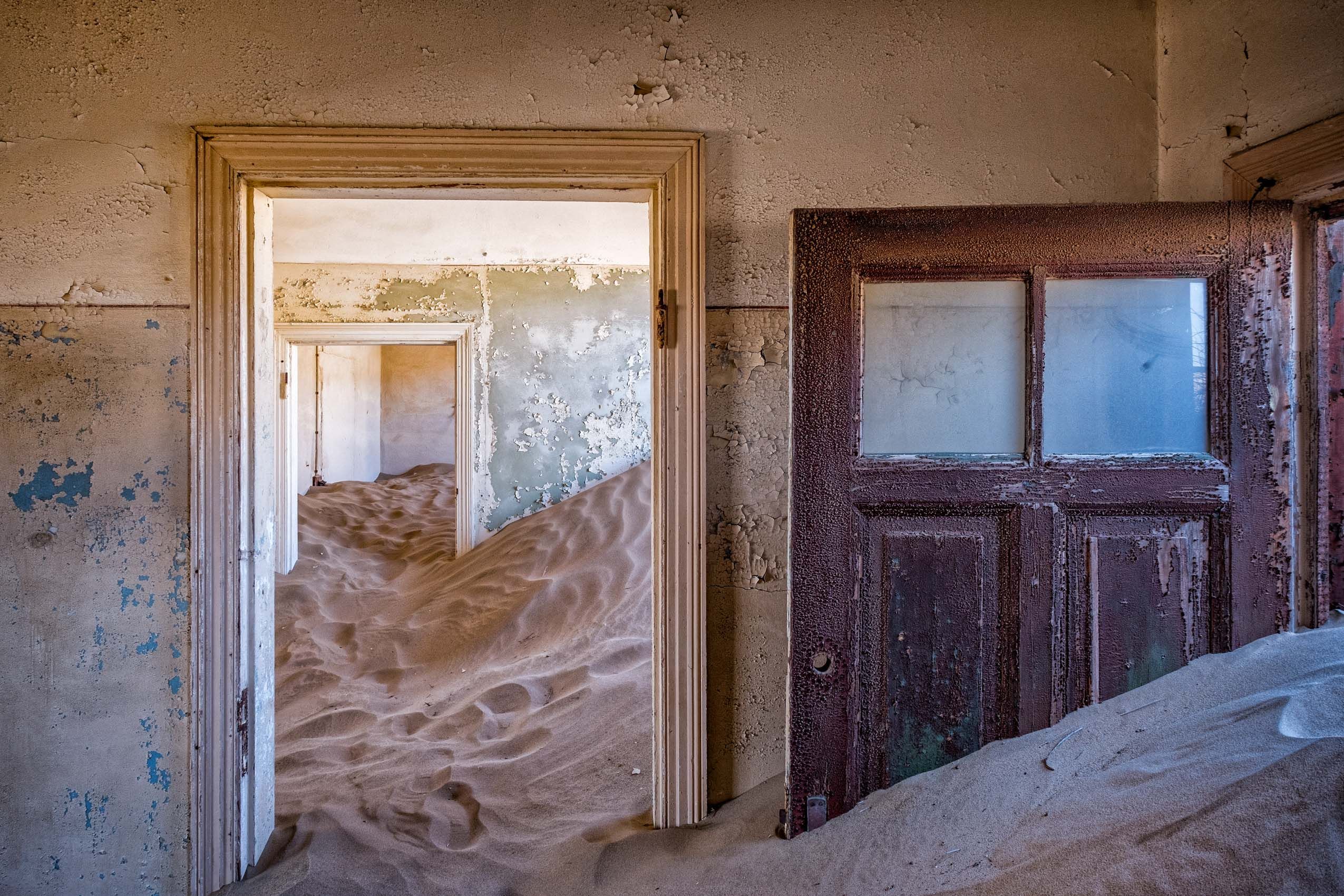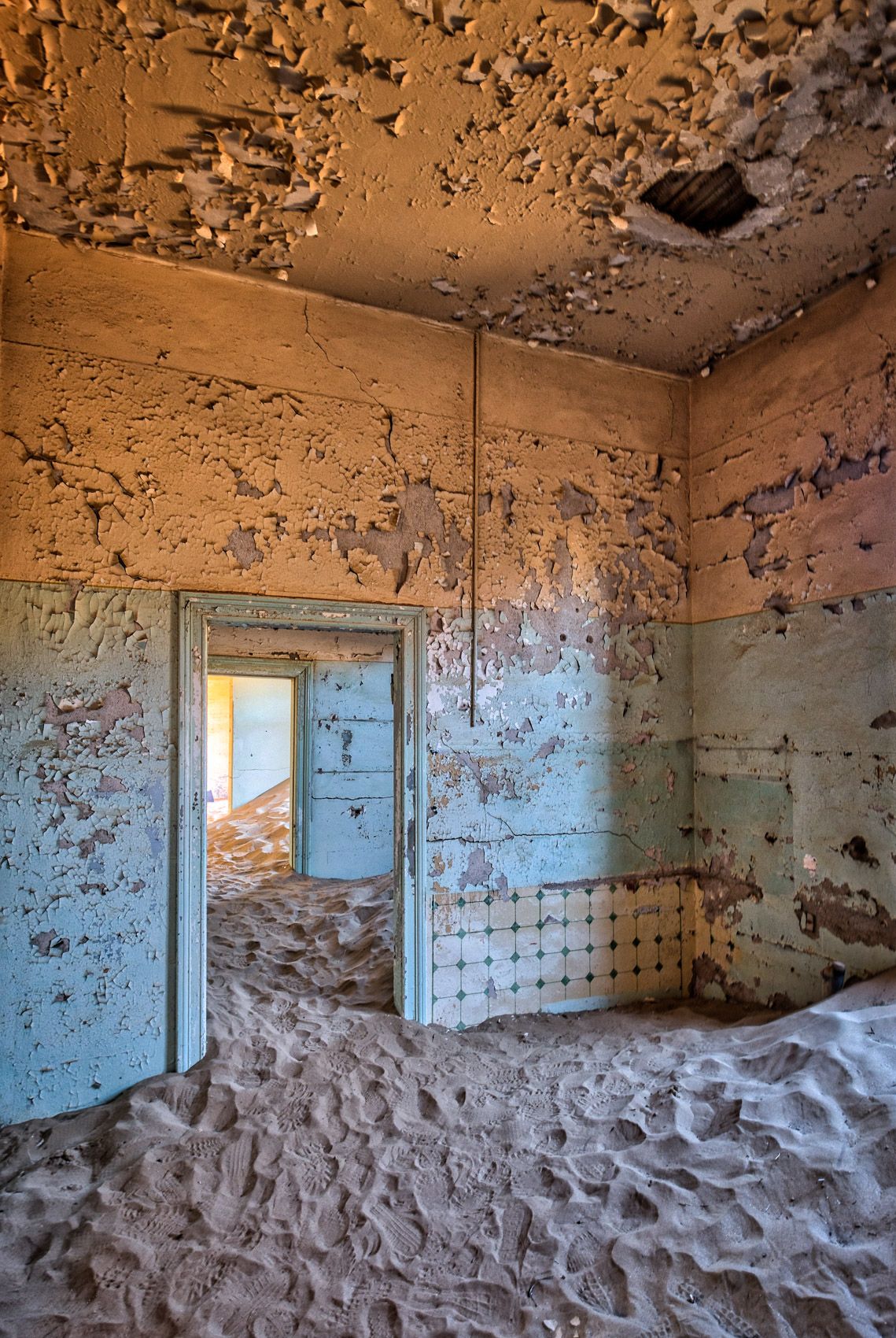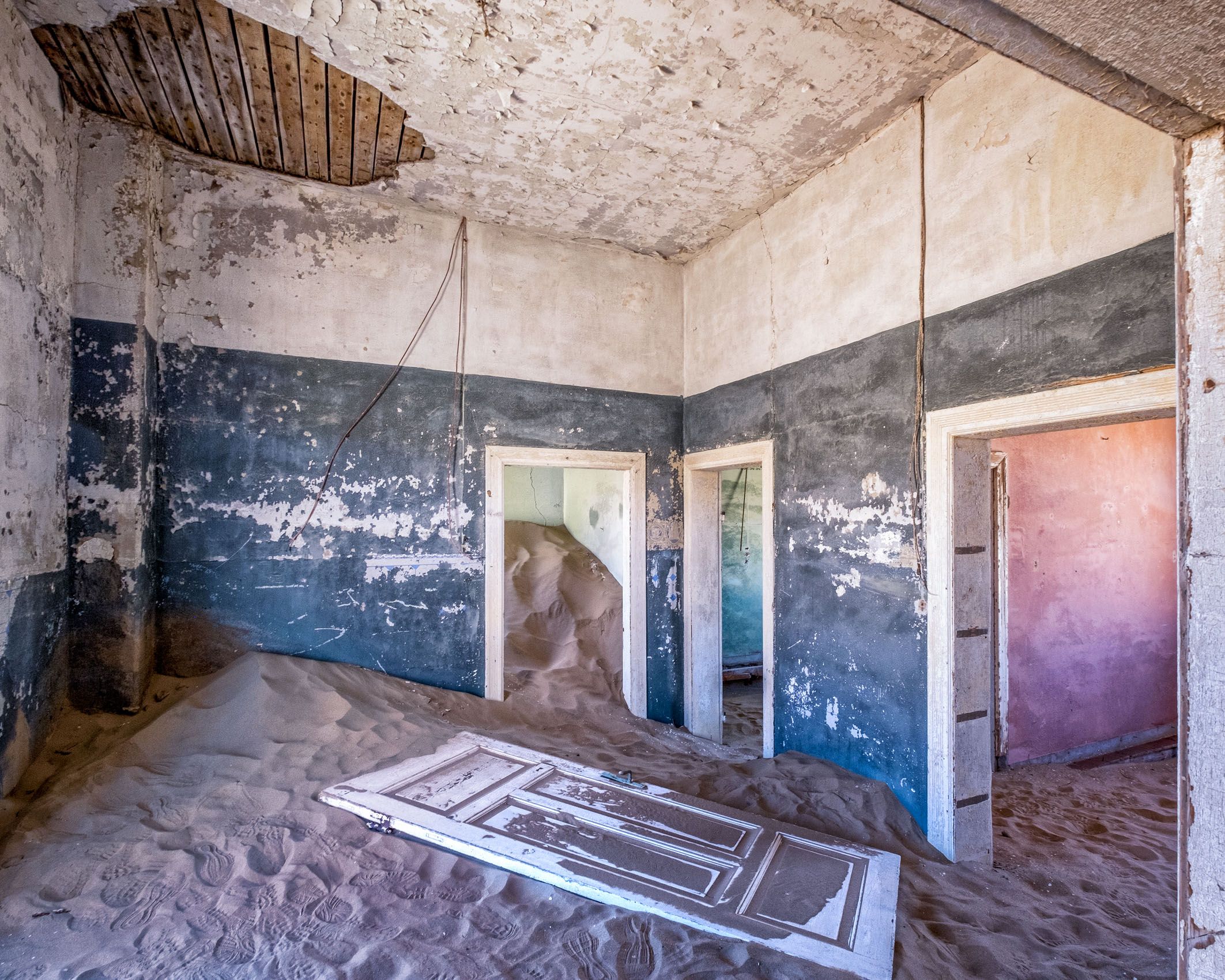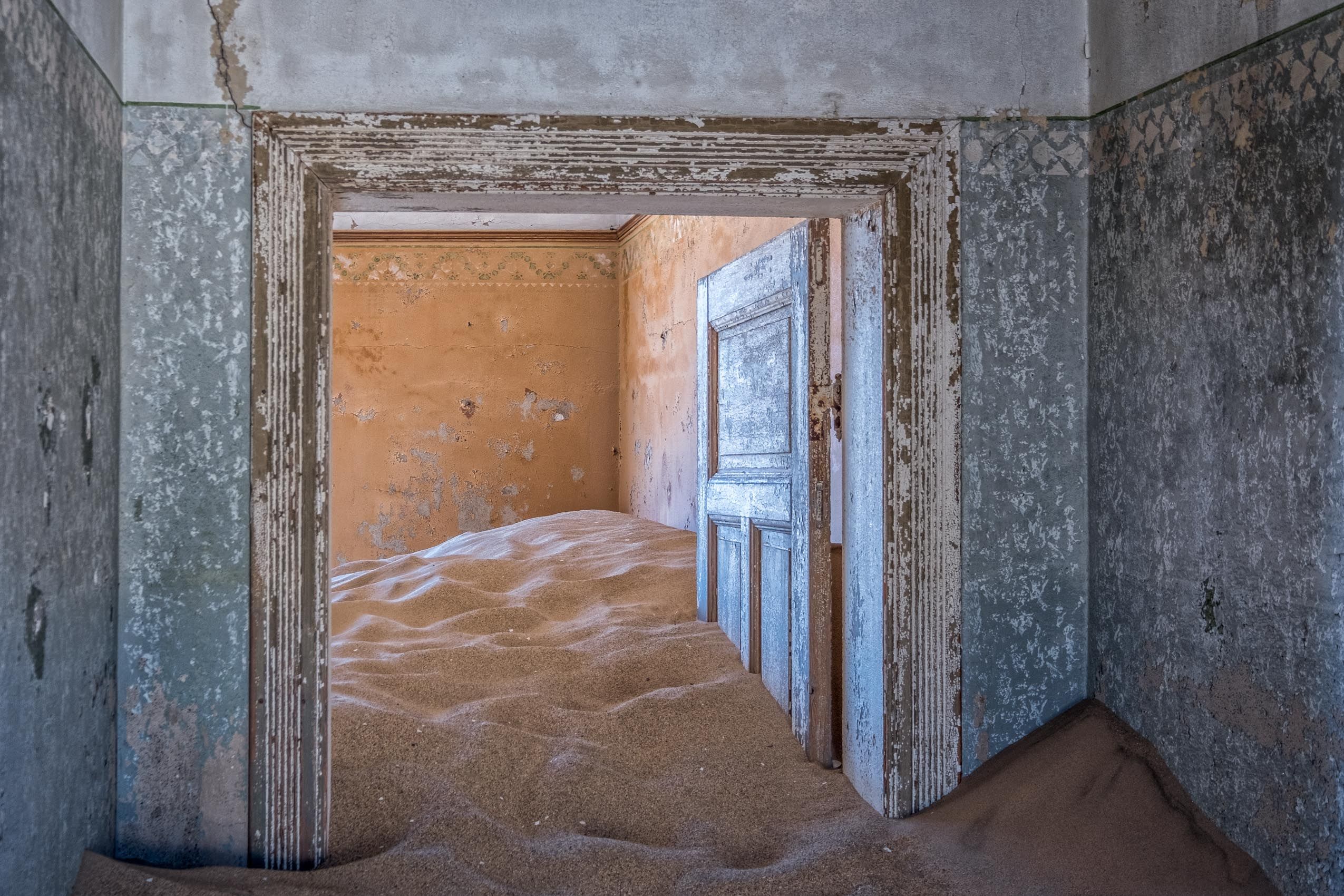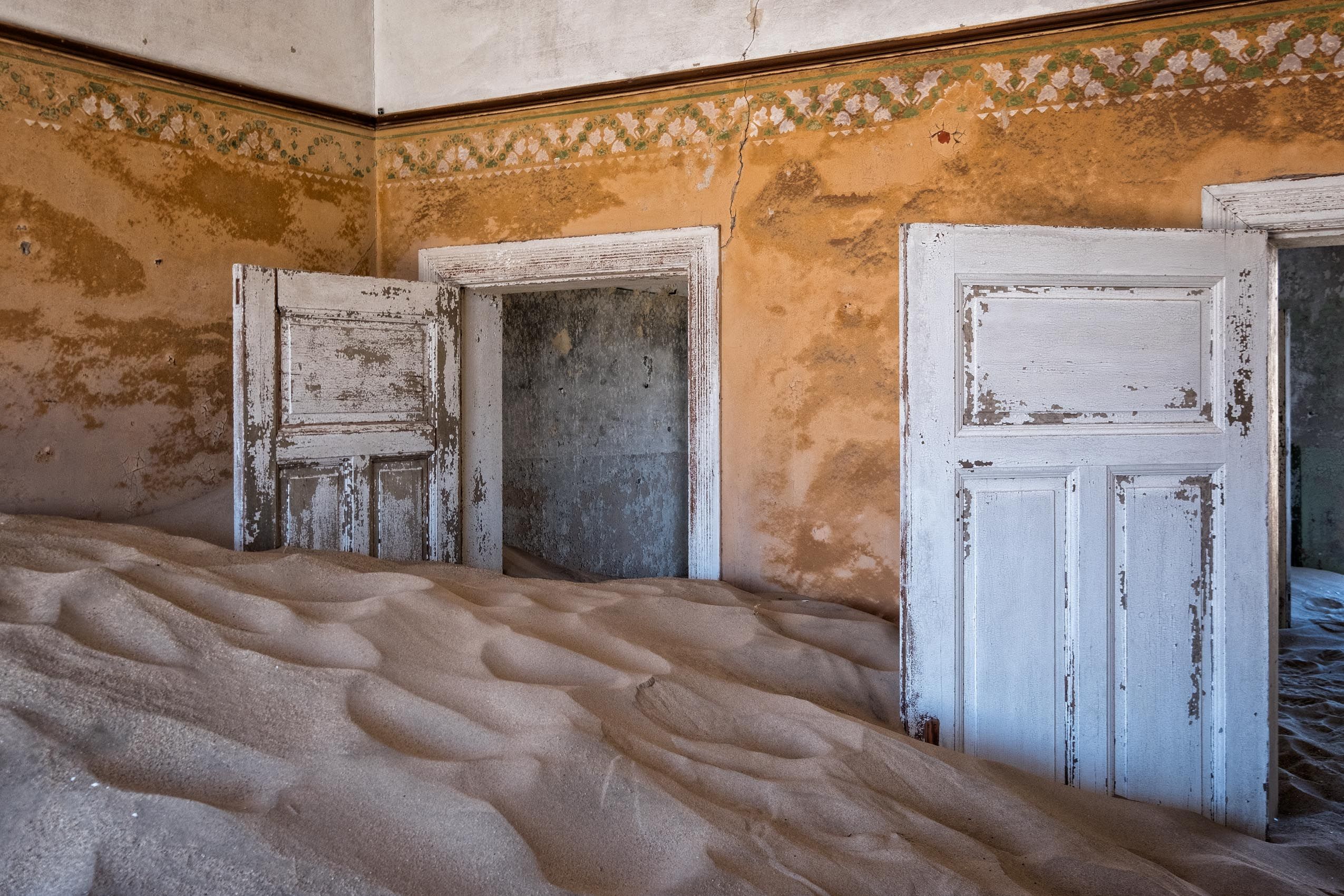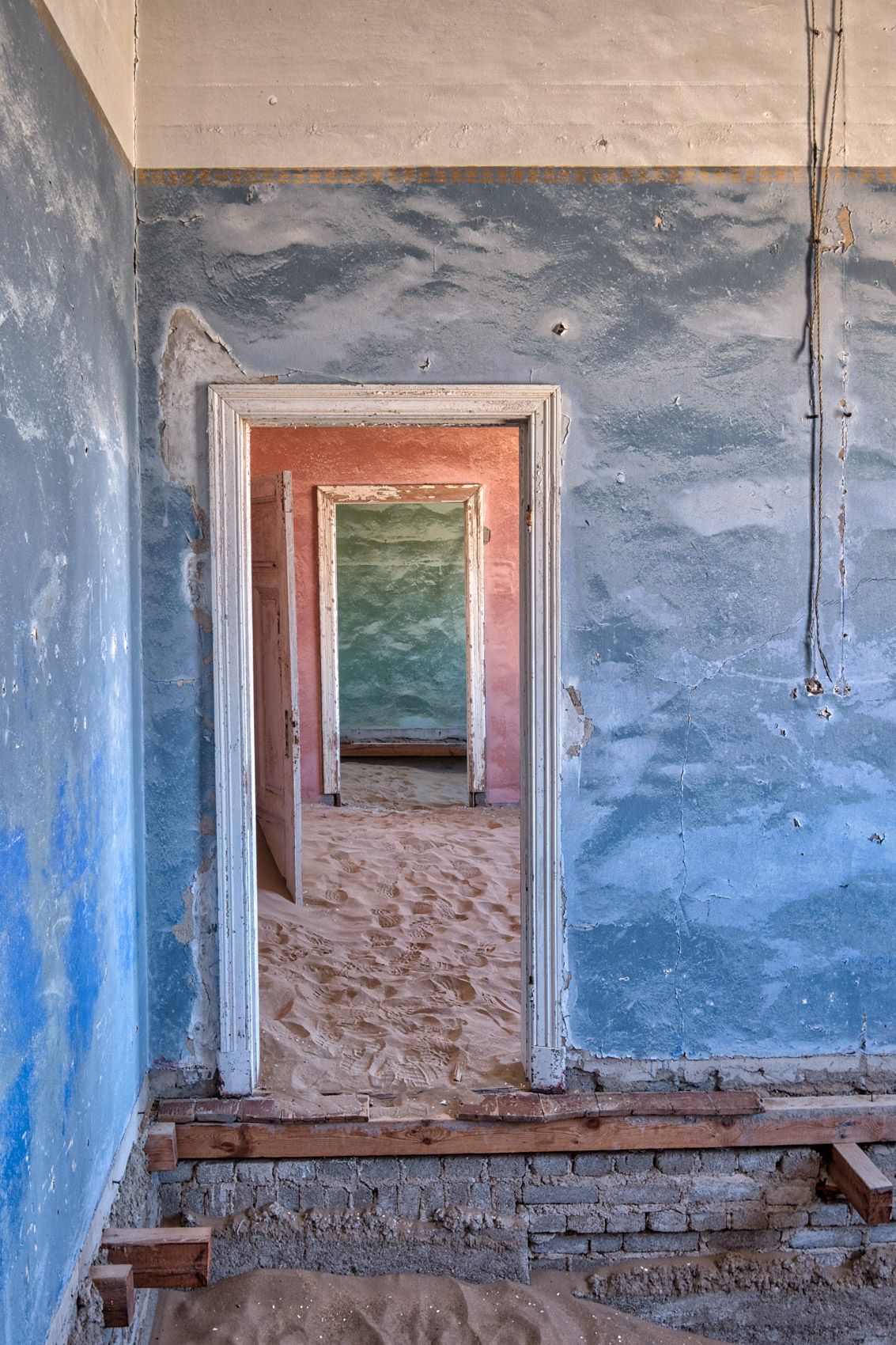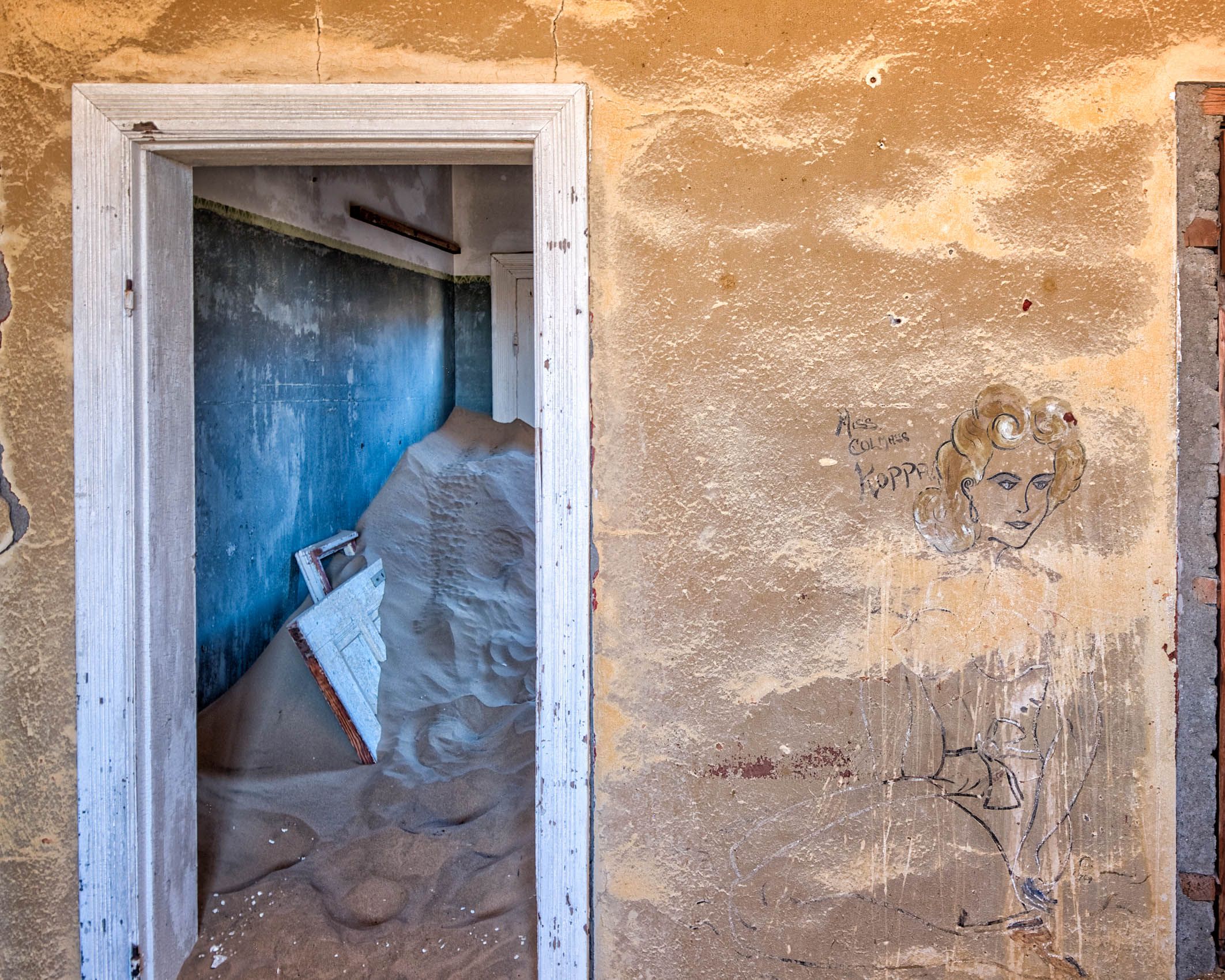NAMIBIA: Kolmanskop—A Diamond Mining Ghost Town
The remains of Kolmanskop lie a few kilometers east of the coastal town of Luderitz, founded during the German colonial period that ended with World War One. Kolmanskop sprang up in the desert after the discovery of diamonds in the area in 1908. The large deposits first to be exploited were at the surface in the gravel of dry river beds; diamonds were said to be so plentiful that they could be picked up by the handful glittering in the moonlight. Old photographs in the on-site museum show of large numbers of people systematically combing the ground for gems. Between the initial discovery in 1908 and the outbreak of the war in 1914, some five million carats worth of diamonds were taken. During its heyday, Kolmanskop boasted some twelve hundred prosperous inhabitants whose houses were decorated and furnished in the latest German fashion, and who enjoyed such amenities as a concert hall, bowling alley, ice factory, power station, and a hospital equipped with the region’s first x-ray machine. Although diamond mining remains vital to the Namibian economy, most now takes place underwater, in the silt and sand offshore. By the mid twentieth century, Kolmanskop had been abandoned and the desert had begun to reclaim the site. Intense sunlight, strong winds, and constantly shifting sands combine to create a strangely desolate and haunting beauty in the wreckage that remains.

